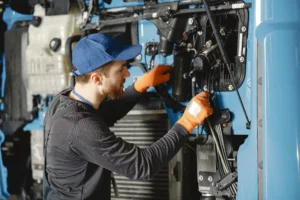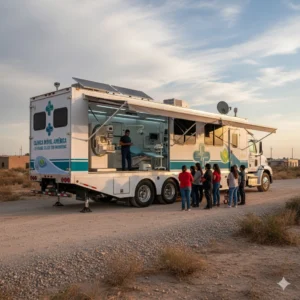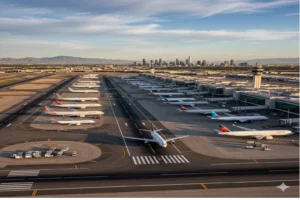This significant astronomical event will have a notable impact on daily life in the United States and the road transportation industry
On Monday, April 8th, the United States will witness a total solar eclipse, the first visible in the country since 2017. Due to the expected increase in traffic on roads during the days surrounding the event, several state transportation departments recommend that truck drivers avoid traveling on the roads.
This significant astronomical event will have a notable impact on daily life in the United States and the road transportation industry in the days leading up to and following the eclipse. A massive influx of travelers is expected, prompting traffic officials to warn that the day of the eclipse could be extremely unproductive for the freight transportation sector.
What truck drivers need to know about the eclipse
According to information shared by NASA, the eclipse will cross the United States around 1:30 p.m. CDT on April 8th and will exit the US through Maine around 3:30 p.m. EDT. The total eclipse path will cover 13 states: Texas, Oklahoma, Arkansas, Missouri, Illinois, Kentucky, Indiana, Ohio, Pennsylvania, New York, Vermont, New Hampshire, and Maine.
Although the eclipse is scheduled for Monday, congestion on roads is anticipated in the days before and after due to the large number of travelers expected during this period. The last total solar eclipse occurred on August 21, 2017, resulting in a significant increase in traffic in and around the path of totality. The FHWA estimates a similar traffic situation this time.
Most states simply advise truck drivers to avoid traveling through high-traffic areas in their respective states before, during, and after the eclipse. No penalties will be imposed on truck drivers or fleets for traveling during these periods.

Safety tips during the eclipse
Heavy traffic demands safety measures to prevent accidents. As a truck driver, practicing responsible driving will help maintain traffic flow and prevent collisions due to distractions from other drivers. Here are some tips on how to navigate roads during the total solar eclipse, shared by the American Automobile Association:
- Keep your vehicle’s headlights on
- Use sunglasses and lower the sun visor to block the sun’s glare
- Do not wear eclipse glasses while driving
- Avoid taking photographs or recording the eclipse while driving
- To view the eclipse, park in a safe area away from traffic
- Stay alert for pedestrians or distracted drivers

How to safely view the eclipse
Use proper eclipse glasses
Eclipse glasses, darker than regular sunglasses, are specifically designed for viewing solar events. Ensure that any pair you purchase includes the ISO 12312-2 filter to avoid counterfeit glasses and the risk of serious eye injuries, including blindness. Use solar eclipse glasses from the beginning to the end of the eclipse to protect your eyes properly.
Avoid missing out and traffic jams
Last-minute relocation in search of clear skies is not advisable unless the roads are clear and you have several emergency plans. An excellent way to monitor traffic before and after the eclipse is to use GPS applications to access real-time traffic information.
Use alternative methods
Experts advise against using cameras, telescopes, or other optical devices while wearing eclipse glasses, as concentrated light can damage the eyes. Instead, consider using pinhole projection methods, such as a colander or interlocked fingers, to safely observe the eclipse. It is crucial to avoid looking directly at the sun through these devices.
This will be the last opportunity to witness a total solar eclipse until the year 2044, so be sure to take necessary precautions to ensure that you and others can enjoy the significant astronomical event that will take place on Monday, April 8th.

World Mental Health Day: how to care for truck drivers’ mental health
As part of World Mental Health Day, we focus on caring for the mental health of truck drivers. World Mental Health Day reminds us that

Solving the shortage of diesel technicians
The role of the transport industry in combating the shortage of diesel technicians: what should be done to solve it? In August 2025, the American

Mobile Clinics: The Unsung Heroes Bringing Healthcare to America’s Highways
The drivers of these massive trailers have become the unsung heroes of America’s roads, delivering life-saving medical services to every corner of the country.

Ending CDL reciprocity: the U.S. seeks stricter measures
New bill would require states to comply with the strict CDL regulations recently established. The U.S. House of Representatives has introduced new legislation aimed at

Cargo theft costs the transportation industry $18 million in losses
Cargo theft has been one of the most persistent issues facing the freight transportation industry so far in 2025. Cargo theft has been one of

Duffy Secures $41 Million to Save Essential Air Service as Shutdown Threat Looms
U.S. Transportation Secretary Sean P. Duffy announced on Wednesday that the Department of Transportation (DOT) has secured $41 million in additional emergency funding to sustain the Essential Air Service (EAS) program, a federal initiative that subsidizes commercial flights to rural and underserved communities across the United States.
